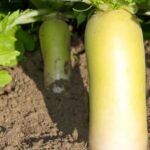Can you use gypsum in vegetable gardens? Gypsum is a versatile and widely used soil amendment that can benefit vegetable gardens in several ways. From improving soil structure to enhancing nutrient availability, gypsum has the potential to positively impact the health and yield of your vegetable plants. In this article, we will explore the role of gypsum in promoting soil and plant health, as well as its specific benefits for vegetable gardens.
Gypsum plays a crucial role in improving soil structure and drainage, which are essential factors for healthy vegetable growth. By understanding how gypsum influences these aspects of soil health, gardeners can make informed decisions about whether to use gypsum in their vegetable gardens.
In addition to its impact on soil structure, gypsum also affects soil pH levels and nutrient availability for vegetables. This section will delve into the mechanisms behind these effects and explain how they contribute to the overall health and productivity of vegetable plants.
Benefits of Using Gypsum in Vegetable Gardens
Gypsum, a naturally occurring mineral, can be a valuable addition to your vegetable garden soil. One of the main benefits of using gypsum in vegetable gardens is its ability to improve soil structure and drainage. Gypsum works by breaking up heavy clay soils and allowing better water penetration and air movement through the soil, which is essential for healthy root growth in vegetable plants.
In addition to improving soil structure, gypsum can also help with drainage issues in vegetable gardens. When applied to the soil, gypsum helps to reduce compaction, which in turn allows excess water to drain away more efficiently. This is especially important for vegetable gardens, as standing water can lead to root rot and other plant health issues.
Furthermore, the improved soil structure and drainage resulting from using gypsum in vegetable gardens can lead to better overall plant growth and production. With healthier root systems and improved nutrient uptake, vegetables grown in gypsum-amended soil may show increased vigor and yield. Overall, incorporating gypsum into your vegetable garden can have a positive impact on the health and productivity of your plants.
| Benefits of Gypsum in Vegetable Gardens | Improving Soil Structure and Drainage |
|---|---|
| Gypsum breaks up heavy clay soils | Allows better water penetration and air movement through the soil |
| Reduces compaction in the soil | Helps excess water to drain away more efficiently |
| Leads to better overall plant growth & production. | Including increased vigor & yield. |
How Gypsum Affects Soil pH Levels and Nutrient Availability for Vegetables
Gypsum plays a crucial role in balancing soil pH levels, thereby influencing the availability of essential nutrients for vegetable plants. When added to the soil, gypsum helps to neutralize acidity, making it less prone to fluctuations and creating an environment where plants can better access vital nutrients.
Effect on Soil pH
One of the key benefits of using gypsum in vegetable gardens is its ability to improve soil structure and effectively alter the pH levels. While acidic soils can hinder the uptake of nutrients by plants, gypsum works to neutralize acidity and create a more balanced pH level. This is particularly important for vegetables as they require specific pH ranges for optimal growth and development.
Impact on Nutrient Availability
In addition to its role in adjusting soil pH, gypsum also influences the availability of essential nutrients for vegetable plants. By improving soil structure and minimizing compaction, gypsum helps to enhance root growth and nutrient uptake. This directly impacts the overall health and productivity of vegetable crops, allowing them to access the necessary elements for robust growth.
Overall, by understanding how gypsum affects soil pH levels and nutrient availability for vegetables, gardeners can make informed decisions about incorporating this amendment into their gardening practices. With its potential to create a more conducive environment for plant growth, gypsum can be a valuable addition to any vegetable garden maintenance routine.
Application Methods for Gypsum in Vegetable Gardens
As a valuable amendment for vegetable gardens, gypsum can be applied in different ways to ensure optimal results. Whether you are looking to improve soil structure, enhance drainage, or balance pH levels, gypsum can be a beneficial addition to your gardening routine.
One common method of applying gypsum in vegetable gardens is through mixing it with the soil. This can be done when preparing the garden for planting or as a top dressing throughout the growing season. By incorporating gypsum into the soil, it helps to reduce compaction and improve water penetration, which is essential for promoting healthy root growth in vegetables.
Another application method for using gypsum in vegetable gardens is by sprinkling it on the surface of the soil. This allows the natural elements such as rainfall and irrigation to gradually introduce gypsum into the soil over time. The process of sprinkling gypsum ensures that it reaches depths where it can address issues related to sodium and clay dispersion, ultimately leading to improved soil structure.
Incorporating gypsum into vegetable gardens can also involve using specialized equipment such as tillers or rakes to work the amendment into the soil. This method is particularly effective for addressing deep-seated problems related to compaction or hardpan that affect root development in vegetables. By working gypsum deep into the soil, you allow for better air and water movement, which can significantly benefit plant growth and overall yield.
| Application Method | Benefits |
|---|---|
| Mixing | Reduces compaction and improves water penetration |
| Sprinkling | Addresses sodium and clay dispersion for improved soil structure |
| Incorporating | Effective for addressing deep-seated problems related to compaction or hardpan |
Common Misconceptions and Myths About Using Gypsum in Vegetable Gardens
There are several common misconceptions and myths surrounding the use of gypsum in vegetable gardens. It’s important to address these misunderstandings in order to make an informed decision about whether or not to incorporate gypsum into your gardening practices.
Gypsum Is a Fertilizer
One of the most prevalent misconceptions is that gypsum is a type of fertilizer. While it does contain some nutrients, such as calcium and sulfur, it is not a complete fertilizer. Gypsum primarily serves to improve soil structure and drainage, as well as adjust pH levels, rather than directly nourishing plants.
Gypsum Causes Soil Salinization
Another misconception is that gypsum can lead to soil salinization. In reality, gypsum actually helps to reduce soil salinity by displacing sodium ions and improving soil structure. This can be especially beneficial for vegetable gardens in areas with high salinity levels.
Gypsum Is Only Beneficial for Heavy Clay Soils
Some gardeners believe that gypsum is only useful for heavy clay soils and may not be necessary for other soil types. While it’s true that gypsum can greatly improve the structure of clay soils, it also has benefits for other soil types. For example, it can help improve water infiltration in compacted soils and aid in root development for vegetables.
By dispelling these myths and misconceptions about using gypsum in vegetable gardens, gardeners can better understand the true benefits and considerations of incorporating gypsum into their gardening practices.
Case Studies and Success Stories
Gypsum is a naturally occurring mineral that has been used for centuries in agriculture to improve soil and plant health. In this section, we will explore some real-life examples of how gypsum has been successfully used in vegetable gardens, showcasing its impact on plant growth and overall garden productivity.
Case Study 1:
In a study conducted by the University of California, researchers found that using gypsum in vegetable gardens led to improved soil structure and increased water infiltration rates. By incorporating gypsum into the soil, they were able to break up compacted clay soils, resulting in better root development and overall healthier plants. Additionally, the researchers observed that the vegetables grown in the gypsum-amended soil showed increased resistance to certain diseases, ultimately leading to higher yields.
Case Study 2:
A vegetable farmer in Texas reported significant improvements in his garden after applying gypsum to his soil. He noticed that the soil became easier to work with, as it was no longer as sticky or compacted. This allowed for better drainage and reduced water logging, which is essential for most vegetable crops. As a result, his vegetable plants were healthier and more vigorous, leading to an increase in both quality and quantity of his harvest.
Case Study 3:
An organic gardener in Florida incorporated gypsum into her raised bed vegetable garden with remarkable results. She observed that her tomatoes and peppers showed significant improvements in fruit quality – they were larger, juicier, and had fewer issues with blossom end rot. Additionally, she noticed an increase in earthworm activity within the soil, indicating improved overall soil biology.
These case studies demonstrate the positive impact that using gypsum can have on vegetable gardens. From improving soil structure and drainage to enhancing nutrient availability for plants, these real-life examples illustrate how gypsum can be a valuable tool for gardeners looking to optimize their vegetable growing experience.
Potential Drawbacks and Considerations When Using Gypsum in Vegetable Gardens
When considering whether to use gypsum in your vegetable garden, it’s important to be aware of potential drawbacks and considerations. While gypsum can offer numerous benefits to soil and plant health, there are a few things to keep in mind before incorporating it into your garden. Here are some points to consider:
- Cost: One potential drawback of using gypsum in vegetable gardens is the cost. Depending on the size of your garden, the amount of gypsum needed to effectively improve soil structure and drainage can add up. It’s important to weigh the potential benefits against the cost before deciding whether to use gypsum in your garden.
- Application Frequency: Gypsum is not a one-time fix for soil issues. It may need to be reapplied regularly over time, especially if you have heavy clay soils that tend to compact easily. Considering the long-term commitment of adding gypsum to your garden is essential before making a decision.
Additionally, there are specific considerations for using gypsum in certain soil types or climates. For example, sandy soils may require different application methods than clay soils, and regions with high rainfall may experience different results from those with low rainfall.
Ultimately, while there are potential drawbacks and considerations when using gypsum in vegetable gardens, it’s important to assess these factors in relation to the specific needs of your garden and soil. Making an informed decision about whether to use gypsum will ensure that you achieve the best possible results for your vegetable plants.
- Budget constraints: Consider if you have the budget required for regular applications.
- Soil type: Assess how your specific soil type may interact with gypsum applications.
Conclusion
In conclusion, the use of gypsum in vegetable gardens can be a beneficial practice for improving soil structure, drainage, and pH levels. It can also help in making nutrients more available to the plants, resulting in healthier and more productive vegetables. However, it is important for gardeners to make an informed decision about whether or not to use gypsum based on their specific soil and plant needs.
When considering the benefits of using gypsum in vegetable gardens, it is important to take into account the potential drawbacks and considerations as well. While gypsum can be effective in many cases, it may not always be necessary or appropriate for every garden. Factors such as existing soil composition, drainage issues, and nutrient levels should be carefully evaluated before deciding whether or not to incorporate gypsum into a vegetable garden.
Ultimately, the decision to use gypsum in a vegetable garden should be based on careful consideration of the specific needs of the soil and plants. By understanding how gypsum affects soil structure, pH levels, and nutrient availability, gardeners can make informed choices that will lead to healthier and more productive vegetable gardens.
In some cases, gypsum may offer significant benefits, while in others it may not be necessary. Gardeners should carefully assess their individual situations before deciding whether or not to use gypsum in their vegetable gardens.
Frequently Asked Questions
What Vegetables Benefit From Gypsum?
Gypsum can benefit vegetables such as carrots, radishes, and turnips by improving soil structure and drainage. It can also help reduce soil compaction, leading to healthier root growth and better nutrient uptake.
Is Gypsum Good for Tomato Plants?
Gypsum is beneficial for tomato plants because it can help prevent blossom end rot, a common problem in tomatoes caused by calcium deficiency. By improving the availability of calcium in the soil, gypsum can contribute to healthier, more productive tomato plants.
Is Gypsum Good for Cucumber Plants?
Gypsum can be good for cucumber plants as well. Like tomatoes, cucumbers are prone to blossom end rot, and gypsum can help address this issue by providing a readily available source of calcium to the plants. Additionally, gypsum helps improve soil structure which benefits cucumber root development and overall plant health.

If you’re looking to get into vegetable gardening, or are just looking for some tips on how to make your current garden better, then you’ve come to the right place! My name is Ethel and I have been gardening for years. In this blog, I’m going to share with you some of my best tips on how to create a successful vegetable garden.





